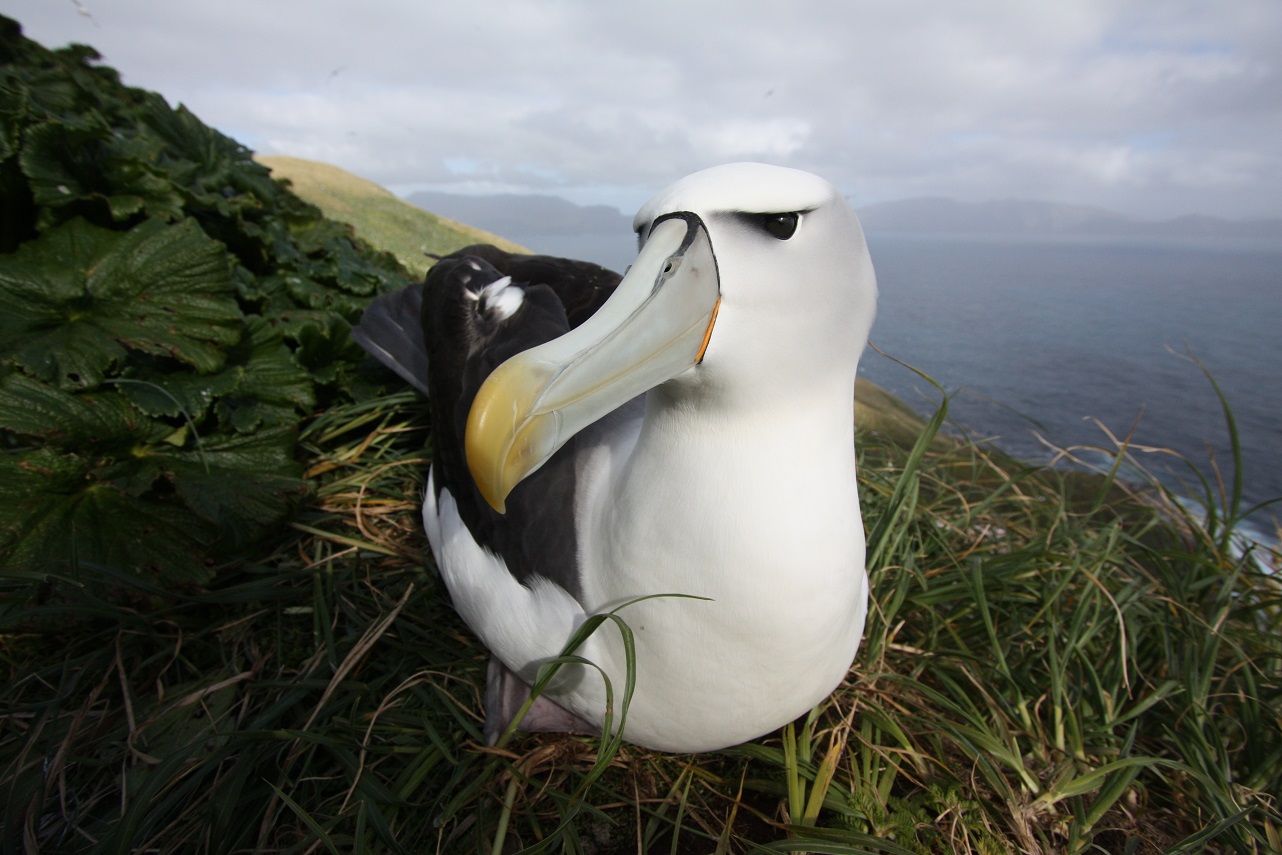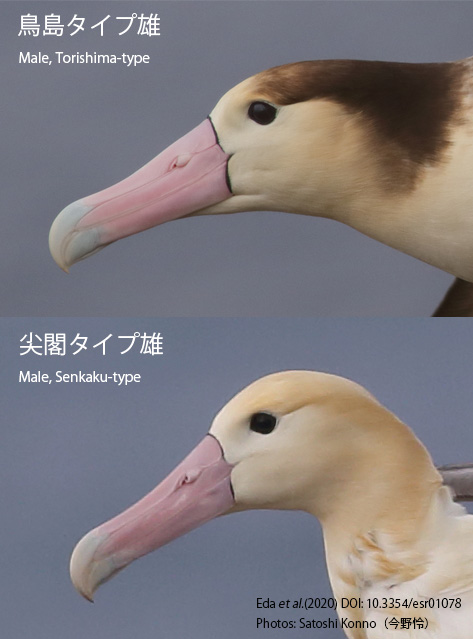 A White-capped Albatross breeding on Disappointment Island, photograph by Graham Parker
A White-capped Albatross breeding on Disappointment Island, photograph by Graham Parker
Graham Parker (Parker Conservation, Dunedin, New Zealand) and colleagues have produced a draft report for the New Zealand Department of Conservation’s Conservation Services Programme on their recent research on globally Near Threatened White-capped Albatrosses Thalassarche steadi in the Auckland Islands.
The report’s summary follows:
“White-capped albatrosses are the most frequently incidentally bycaught albatross species in New Zealand commercial fisheries. The species ranks highly in New Zealand Government risk assessment, with uncertainty around the estimate of adult survival. A white-capped albatross mark-recapture study was established on Disappointment Island in January 2015 to improve estimates of adult survival, and other key population demographic parameters. A 3.5-day research trip to Disappointment Island was conducted 18–21 January; the tenth visit to the island for white-capped albatross survival rate research. Annual survival rates for white-capped albatrosses vary substantially year-on-year, ranging between 0.83 ± 0.06 (± SE) in 2015 to 0.96 ± 0.03 in 2020. Mean annual survival over that period was 0.89 ± 0.04 (excluding the estimate for 2018 which had particularly high variance). Robust estimates of survival and productivity of white-capped albatross require continued visits to Disappointment Island. Banding should be a high priority to ensure the core mark-recapture study is not compromised, since precision of survival estimates is reliant on it. Tracking devices, and cameras to assess productivity, were also recovered and deployed.”
Reference:
Parker, G.C., Osborne, J., Sagar, R., Schultz, H. & Rexer-Huber, K. 2024. White-capped albatross population study, Disappointment Island 2024. DRAFT Final report to the Conservation Services Programme, Department of Conservation. Dunedin: Parker Conservation. 14 pp.
27 May 2024

 English
English  Français
Français  Español
Español 


 Pink-footed Shearwater, gouache watercolour for ACAP by
Pink-footed Shearwater, gouache watercolour for ACAP by 


